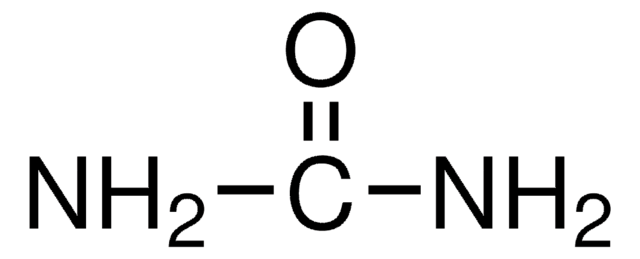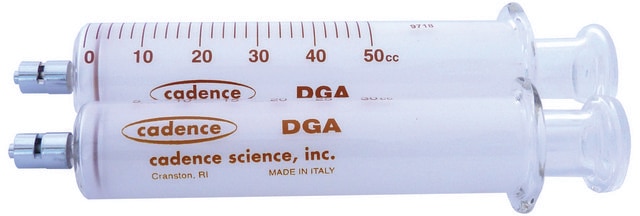21533
SGE Gas Tight Syringes, Luer Lock
100MR-LL-GT, volume 100 mL, needle size (not included)
Synonym(s):
SYRINGE SGE 100MR-LL-GT, 100ML
Sign Into View Organizational & Contract Pricing
All Photos(1)
About This Item
UNSPSC Code:
41122001
Recommended Products
material
glass syringe
needle size
(not included)
feature
needle type Luer lock
packaging
pkg of 1 ea
manufacturer/tradename
SGE 009760
volume
100 mL
Looking for similar products? Visit Product Comparison Guide
Related Categories
Application
SGE gastight Luer lock syringe was used to collect gas samples from the slightly pressurized headspace, while measuring anaerobic ammonium oxidation. It was also used to collect gas samples of the headspace gas, during an experimental procedure related to increase in the occurrence of the anammox reaction in estuarine sediments. It may also be used for introduction of samples to the gas sampling and injection system (GASIS) inlet, in a study involving versatile inlet system for on-line compound-specific δD and δ13C gas chromatography-oxidation/reduction-isotope ratio mass spectrometry analysis of gaseous mixtures.
related product
Product No.
Description
Pricing
Certificates of Analysis (COA)
Search for Certificates of Analysis (COA) by entering the products Lot/Batch Number. Lot and Batch Numbers can be found on a product’s label following the words ‘Lot’ or ‘Batch’.
Already Own This Product?
Find documentation for the products that you have recently purchased in the Document Library.
Customers Also Viewed
Mark Trimmer et al.
Applied and environmental microbiology, 69(11), 6447-6454 (2003-11-07)
Until recently, denitrification was thought to be the only significant pathway for N(2) formation and, in turn, the removal of nitrogen in aquatic sediments. The discovery of anaerobic ammonium oxidation in the laboratory suggested that alternative metabolisms might be present
Widespread occurrence of the anammox reaction in estuarine sediments.
Nicholls JC and Trimmer M.
Aquatic Toxicology (Amsterdam, Netherlands), 55 (2), 105-105 (2009)
Mark Henning et al.
Rapid communications in mass spectrometry : RCM, 21(14), 2269-2272 (2007-06-20)
Compound-specific deltaD and delta13C analyses of gas mixtures are useful indicators of geochemical and environmental factors. However, the relative concentrations of individual components in gas mixtures (e.g., H2, CO2, methane, ethane, propane, i-butane, n-butane) may vary over several orders of
Our team of scientists has experience in all areas of research including Life Science, Material Science, Chemical Synthesis, Chromatography, Analytical and many others.
Contact Technical Service



